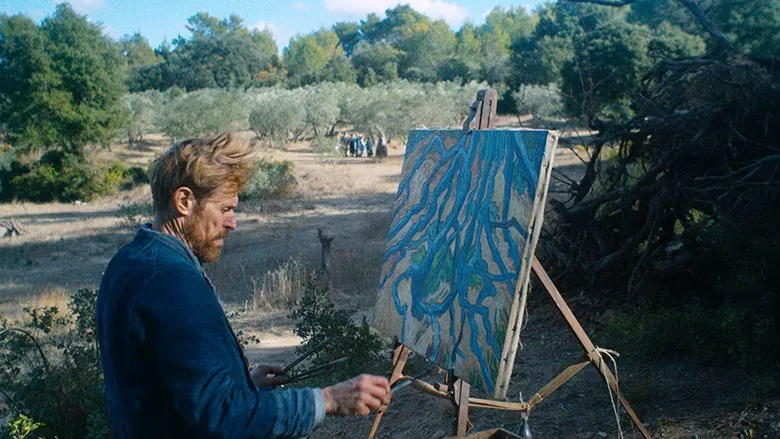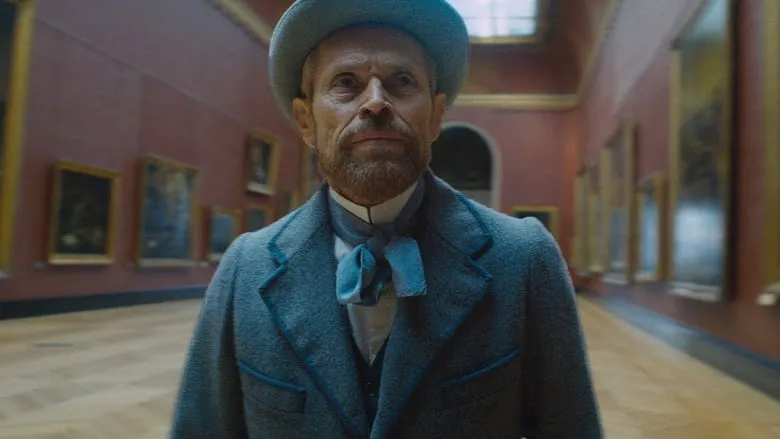The Canvas of the Soul: A Character Analysis in “At Eternity’s Gate”
Julian Schnabel’s “At Eternity’s Gate” is not merely a biopic; it’s an immersive dive into the mind and spirit of one of history’s most enigmatic artists. At its core, the film thrives on its profound character portrayals, meticulously dissecting the intricate psychological landscapes of Vincent van Gogh and the pivotal relationships that shaped his tumultuous life and extraordinary art. This character analysis explores the central figures who illuminate this poignant cinematic journey.
1. Vincent van Gogh: The Tortured Visionary

At the heart of “At Eternity’s Gate” is Vincent van Gogh, brought to life with a breathtaking performance by Willem Dafoe. The film portrays Vincent as a man consumed by an almost spiritual desire to capture the essence of the natural world, driven by an unyielding passion for his craft. From his arrival in Arles, Vincent is shown to be acutely sensitive, finding profound inspiration in the sun-drenched landscapes and cypress trees that define his iconic style. His artistic compulsion is virtually an obsession, as he dedicates countless hours to painstakingly rendering scenes, striving to convey not just what he sees, but what he feels.
Yet, Vincent’s creative fervor is inextricably linked to his profound inner turmoil. Dafoe masterfully conveys Vincent’s constant battle with anxiety, depression, paranoia, and self-doubt. These mental struggles manifest in erratic behavior, violent outbursts, and moments of despairing introspection, offering a sensitive and raw depiction of his deteriorating mental state. His vulnerability is palpable, allowing viewers to empathize with the isolation and misunderstanding he frequently experiences. Vincent’s quest for inspiration becomes a desperate search for connection and meaning in an indifferent world, making him not just an artist, but a profound symbol of the often-painful human condition. His character embodies both the boundless creative spirit and the crushing weight of existential suffering.

2. Paul Gauguin: The Artistic Catalyst

Paul Gauguin, meticulously portrayed by Oscar Isaac, serves as a critical catalyst in Vincent’s narrative arc. His presence in Arles and subsequent shared residence with Van Gogh intensifies the film’s exploration of Vincent’s inner world. The dynamic between the two artists is fraught with palpable tension, fueled by Gauguin’s own artistic ambitions and Vincent’s struggles with self-expression and mental health. While an underlying current of mutual suspicion and jealousy exists, stemming perhaps from their differing approaches to art and life, there is also a profound, unspoken respect for each other’s undeniable talent.
Gauguin’s character offers a grounding, albeit sometimes challenging, presence for Vincent. Their conversations, though sometimes strained, delve into profound artistic and philosophical discussions that highlight Vincent’s unique vision against Gauguin’s more established, perhaps conventional, perspective. Despite the inevitable friction, their shared experiences as outsiders in the art world foster a sense of camaraderie, ultimately pushing Vincent further into his creative, albeit unstable, pursuits. Gauguin’s eventual departure marks a significant turning point, underscoring Vincent’s profound isolation.
3. Theo van Gogh: The Steadfast Confidant

The most enduring and complex bond depicted in the film is that between Vincent and his younger brother, Theo van Gogh, rendered with sensitive depth by Rupert Friend. Theo, an art dealer, is Vincent’s unwavering confidant, primary financial benefactor, and perhaps his only consistent supporter. Their relationship is characterized by a deep, innate understanding and empathy that transcends the verbal.
However, their familial bond is continuously strained by the immense pressures of Vincent’s deteriorating mental health and the expectations placed upon him by Theo, however well-intentioned. Theo’s struggle to balance his brother’s artistic needs with the harsh realities of his psychological condition creates a tangible sense of desperation and pathos. Scenes between the brothers are imbued with a quiet suffering; Theo’s patient yet increasingly helpless support shines through, underscoring the tragedy of Vincent’s brilliant but ultimately foreshortened life. Theo’s unwavering belief in Vincent’s genius, despite the professional and personal toll, is a testament to an extraordinary fraternal love and arguably the reason Vincent was able to continue creating for as long as he did.
Conclusion
“At Eternity’s Gate” masterfully utilizes these interconnected character portrayals to explore profound themes of art, mental illness, and the elusive nature of human connection. Willem Dafoe’s transcendent performance as Vincent van Gogh anchors the film, allowing viewers to intensely witness the beautiful, yet agonizing, process of an artist consumed by his vision while battling his inner demons. The relationships with Paul Gauguin and Theo van Gogh serve not merely as supporting roles, but as vital lenses through which Vincent’s brilliance, isolation, and eventual tragic decline are illuminated, creating a poignant and unforgettable cinematic experience.